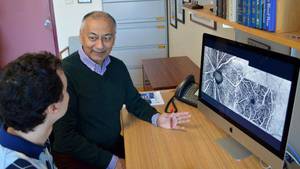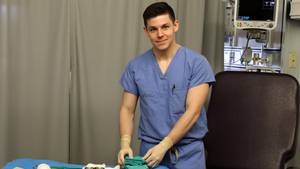Every day, over 7,000 Nova Scotians come to work at the QEII Health Sciences Centre. They are doctors, nurses, researchers, therapists, administrative professionals, and maintenance staff, among many others. They sometimes miss birthdays and special occasions at home to be at the bedside of patients or ensuring that excellent care takes place. They've experienced heartache, as well as celebration, with patients and their families. But every day, QEII staff give 100 per cent to help others. That's what defines them as caregivers and health centre staff.
We put our lives, our loved one's health and trust into the hands of those at the QEII, in the most advanced healthcare facility in Atlantic Canada. The QEII, which includes 10 buildings on both the VG and Halifax Infirmary sites, operates 24 hours a day, seven days a week for those exact moments when we need it most, no matter what the weather is or what news is breaking.
But what happens when our healthcare buildings start to fail? When a facility has given us everything it’s got and the fixes required outpace the hours in the day and money in the bank?
We all know that buildings themselves do not deliver care. Care is dependent on the dedicated staff and the advanced technology and equipment housed within the walls. But just like families, health care needs a home that is strong, reliable, and adaptable. With some of the most critically ill patients from across Atlantic Canada at the QEII, it is essential that the buildings offer comfort, space to heal, or sometimes, an appropriate place to say goodbye.
The time has come to acknowledge and thank our VG healthcare facilities for the decades of strength and stability provided to thousands of Atlantic Canadians. If the walls could talk at the QEII, imagine the stories they would tell.
It’s now time to look forward to the future and the exciting plans to redevelop the QEII. This spring, government shared plans on what health care will look like at the QEII for generations to come. Plans include an expanded cancer care centre, improved outpatient space, relocation of services to improve the patient experience, and new technology and equipment to deliver care. And plans that include decommissioning tired facilities.
These changes will affect us all and there has never been a more exhilarating time to be part of health care and the future of this province. I encourage you to visit QE2redevelopment.ca to learn more about the changes and stay connected as plans unfold. We will also keep you updated through this publication, which is a joint initiative between the QEII Foundation and
The QEII Foundation is energized to play a significant role, along with our donor community, in redevelopment of the QEII and advancing care. The lights never turn off at the QEII - they only shine brighter from the passion of health centre staff and physicians and donors whose generosity is changing and saving lives.
We hope you enjoy our tenth issue of QEII Times.







